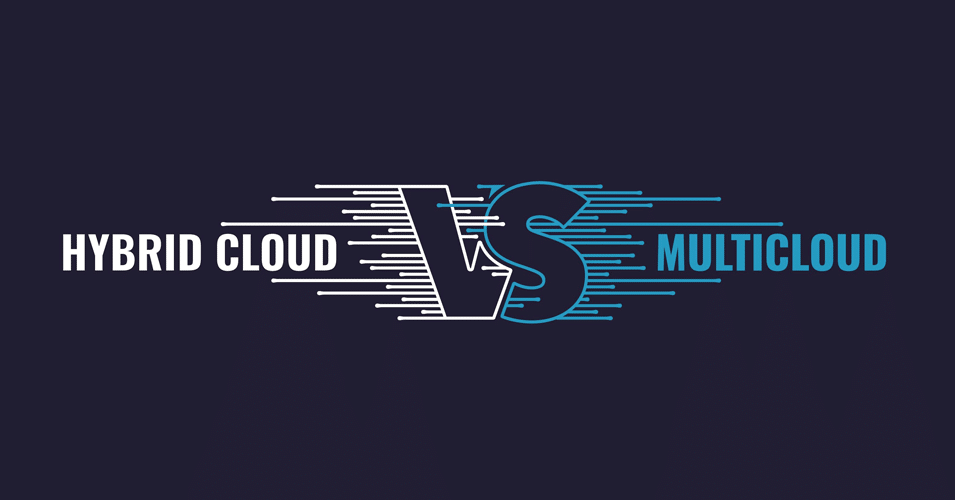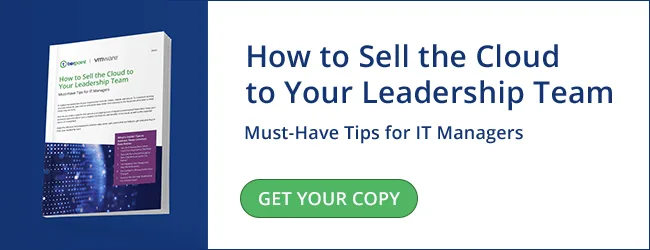
As of 2022, 89% of organizations have adopted a multicloud strategy, and 80% are employing a hybrid cloud model. When discussing multicloud vs hybrid cloud deployments we often focus on what’s different. But the differences are less important than the importance of forming your IT strategy based on the goals of the business.
You can then look to see if the goals are best met with one cloud or multiple public clouds. You may end up choosing a hybrid cloud, a multicloud model, or a combination IT strategy (AKA hybrid IT).
What Is The Difference Between Multicloud and Hybrid Cloud?
In cloud computing, we often hear the terms “Multicloud” and Hybrid Cloud. While both terms sound similar, there are a few key differences organizations tend to overlook. Understanding the differences between these two cloud approaches is essential for organizations that are striving to ensure cloud optimization and meet business needs.
What Is a Hybrid Cloud?
A hybrid cloud is the use of multiple cloud types in one environment. It could include public cloud (Microsoft Azure, AWS, etc.) and private cloud infrastructure. Hybrid cloud adoption has increased over the past few years due to its many benefits, which we’ll be covering shortly.
What Is a Multicloud?
Multicloud computing is the use of multiple public cloud platforms to support business functions. Multicloud deployments can be part of an overall hybrid cloud environment. A hybrid cloud strategy may include multiple clouds, but a multicloud strategy isn’t necessarily hybrid.
A Note About Hybrid IT
Many confuse hybrid cloud with hybrid IT, but there is a difference. Hybrid IT is the use of the cloud with other technologies, like non-cloud workloads. Those non-cloud workloads could be hosted in colocation data centers or on-premises infrastructure.
Hybrid IT strategy is broader when compared to hybrid cloud and multicloud. Hybrid and Multicloud environments can be part of a hybrid IT environment if there is also a non-cloud component. Learn more about why hybrid IT is the future of data centers.
Multicloud vs Hybrid Cloud: Similar Drivers, Benefits, and Roadblocks
Businesses are adopting cloud computing at a staggering rate, and many use more than one cloud platform. Although multicloud and hybrid cloud differ, their adoption is driven by similar requirements. The two strategies also share many of the same benefits and roadblocks.
Hybrid and multicloud environments combine public and private clouds. And in the case of hybrid IT, can also include non-cloud environments. Organizations opt for these more complex models for many reasons. These include managing spend, customizing a solution that’s right for their business processes, and improving security for more sensitive data.
Key drivers of the adoption of hybrid cloud and multicloud computing include:
- the ability to pick and choose the best execution venue (BEV) for each workload and application
- to access new and innovative technologies
- to place workloads in different geographies
Hybrid and multicloud strategies can also diversify risk, improve efficiencies of operations, and help businesses comply with regulatory requirements.
Multicloud and Hybrid Cloud Advantages
- Cost control: A monthly operating expense (OpEx) for cloud services can replace the capital expense of new hardware. The economies of scale and expertise offered by cloud service providers can speed return on investment (ROI).
- Performance optimization of workloads: Does a workload need high-performance computing, fast communication networks, or edge computing cloud resources? You can match the workload to any of a variety of clouds with specific capabilities.
- Flexibility: Up, down, or off, you can right-size your compute, data storage, and network bandwidth as business demands change.
- Reliability: Clouds build in redundancy and make it easy to replicate systems and data. This enables quick failover to another cloud when needed to bypass disruptions.
With multicloud and hybrid cloud, businesses also gain the advantages of the cloud platforms within those environments. Meaning all the benefits of public cloud also apply to multicloud and hybrid cloud environments. This includes security, innovation, rapid deployment and scalability, disaster recovery, and much more.
Multicloud and Hybrid Cloud Disadvantages
- Implementation: Any time you add more cloud components to the mix, you have more variables to think about. Working with a cloud architect will help with any implementation and management challenges that come from a hybrid or multicloud environment. This can also be a problem for compatibility.
- Hybrid Cloud models introduce complexity, especially when it comes to security. Security challenges increase with a hybrid cloud or multicloud deployment. The blend of clouds requires security expertise across all platforms. This complexity can cause many security hurdles.
- More room for blind spots. You want to be able to have a holistic view of your cloud environment and manage cloud sprawl. If you don’t have everything aggregated together, cloud visibility can take a hit.
- Knowledge gaps: Adopting a hybrid cloud may mean taking on something that your IT staff isn’t as skilled in. Being aware of your team’s abilities, and knowing when to take on outside help, will keep this risk low.
You can expect similar roadblocks, too. Specific skill sets are needed that you may not have in-house. Your leadership team may fear the loss of control or loss of cloud visibility. So, education may be required.
Your hybrid cloud or multicloud will create a larger attack surface, which will require broadening your security domain. In addition, managing multiple types of clouds and computing can increase the complexity of cost management and service integration.
Also read: How to Address Hybrid Cloud Complexity
Flexibly Choose the Cloud Platform by Workload
Different clouds and on-premises data centers have different strengths. A hybrid or multicloud strategy can help you meet a variety of application and end-user demands. Both hybrid and multicloud are a big step forward. They move you away from forcing all your workloads to fit on a single cloud or platform.
What’s Best For Your Cloud Strategy?
“The cloud” isn’t a place – it’s a design, a strategy. And you don’t need to limit your business to one cloud platform. You can find the right mix of clouds and non-cloud infrastructure for your business. Making a strategy work for your business is less about the terminology and more about your business goals and strategy. You can have both in one cloud strategy if that’s what works for your organization.
The best strategy for your business depends on what you already have and where you want to go. Some businesses stumble into hybrid or multicloud. Others actively adopt it to solve specific issues. What you have now may not meet your current and future business goals.
We tell our customers to look at their entire cloud strategy. TierPoint designs solutions that combine technologies to achieve the specific goals of each of our clients. We can show you how to achieve your digital transformation goals with an effective cloud strategy.
How to Sell the Cloud to Your Leadership Team
Part of adopting the cloud is convincing your leadership that it’s time to modernize your IT infrastructure. The drivers could be network performance, on-premises data center costs, and more. Read our complimentary eBook to learn how to have those conversations.

